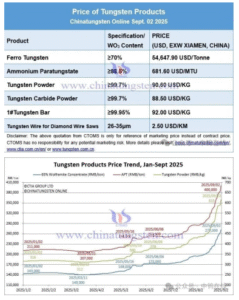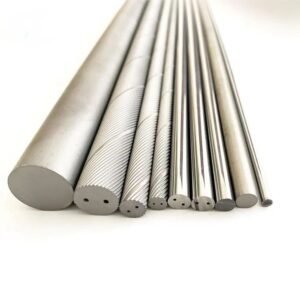In CNC machining, selecting the right cutting tool is crucial for achieving precision, efficiency, and high-quality finishes. Among the many tools available, end mills and drill bits are two of the most commonly used, but they serve different purposes. While both are designed to remove material, their structural differences, cutting capabilities, and machining applications distinguish them significantly. Understanding these differences is essential for choosing the right tool for the job and ensuring optimal machining performance.
1. Structural Differences and Cutting Geometry
The primary distinction between an end mill and a drill bit lies in their structure and cutting geometry.
- Drill Bits: These are designed specifically for making cylindrical holes by cutting directly downward into the material. The tip of a drill bit is usually conical, with angles typically around 118 or 135 degrees, which helps in centering the tool and penetrating the material efficiently. The helical flutes along its body aid in chip removal, preventing overheating and ensuring smooth cutting. However, drill bits are limited to axial (vertical) movement and cannot cut laterally.
- End Mills: Unlike drill bits, end mills have cutting edges not only at the tip but also along the sides, allowing them to cut in multiple directions. This makes them more versatile for milling operations such as slotting, contouring, and pocketing. End mills come in different geometries, including flat-end, ball-nose, and corner-radius designs, each suited for specific applications. Additionally, the number of flutes on an end mill affects its performance. Fewer flutes (such as two-flute end mills) provide better chip evacuation and are ideal for cutting softer materials, while four-flute or higher end mills offer finer surface finishes when cutting harder materials.
2. Cutting Methods and Performance in CNC Machining
Due to their different geometries, drill bits and end mills interact with the workpiece differently, affecting their performance in CNC machining.
- Drill Bits: These tools cut by plunging straight down into the material along the Z-axis, efficiently removing material to create holes. This method is highly effective for deep-hole drilling, where maintaining precision and minimizing deflection is crucial. However, because drill bits do not have side-cutting capabilities, they cannot be used for operations like slotting or contouring.
- End Mills: These tools offer greater versatility because they can cut both vertically and laterally. In addition to drilling shallow holes, end mills can create slots, machine intricate profiles, and finish surfaces. Some end mills are also capable of helical interpolation, a technique where the tool follows a spiral path to create a hole. This eliminates the need for a separate drilling tool in certain applications. However, while end mills can perform drilling operations, they are not optimized for deep hole drilling, as excessive depth can lead to tool deflection, increased heat buildup, and uneven cutting.
3. Applications in CNC Machining
Because of their distinct characteristics, drill bits and end mills are used for different machining applications.
- Drill Bits are best suited for:
- Creating holes in metal, wood, or composite materials
- Deep-hole drilling with high precision
- Applications where fast material removal is required along the Z-axis
- End Mills are ideal for:
- Slotting and pocketing, where material is removed along the X and Y axes
- Contouring and profiling to create complex part geometries
- Surface finishing for achieving high precision and smoothness
- Helical milling to produce holes with improved dimensional accuracy
While drill bits are the go-to option for hole-making, end mills provide more flexibility in CNC machining, allowing for a wide range of operations beyond simple drilling.
4. Tool Selection Considerations
Choosing between an end mill and a drill bit depends on several factors, including the material being machined, the required precision, and the type of cut needed.
- For hole-making applications, a drill bit is the most efficient tool. Its design ensures rapid penetration and effective chip evacuation, making it ideal for machining deep and precise holes.
- For milling operations, an end mill is the preferred tool due to its ability to cut in multiple directions. This makes it essential for creating intricate features and achieving precise surface finishes.
- For combined machining tasks, such as creating a hole followed by contour milling, a drill bit may first be used to establish the hole before an end mill is employed for refining or expanding it. This approach improves efficiency and prevents excessive tool wear.
Understanding these considerations allows machinists to optimize tool selection, improve machining efficiency, and extend tool life.
5. Common Mistakes When Using End Mills and Drill Bits
Even with the right tool selection, improper use can lead to machining errors, tool failure, and poor surface quality. Some common mistakes include:
- Using an end mill for deep drilling: While end mills can perform shallow drilling, using them for deep holes can cause excessive deflection and tool breakage.
- Using a drill bit for lateral cutting: Drill bits are not designed for side-cutting, and attempting to use them for slotting or profiling can result in tool failure.
- Incorrect feed rate and speed settings: Running a drill bit too fast can cause overheating, while using an end mill with an improper feed rate can lead to chatter and poor surface finishes.
- Neglecting chip evacuation: In both drilling and milling, inadequate chip removal can lead to heat buildup, tool wear, and compromised machining accuracy.
Proper training, tool selection, and machining parameters help prevent these issues and ensure optimal performance.
6. Conclusion
End mills and drill bits are both essential tools in CNC machining, but their differences in design and function make them suitable for distinct applications. Drill bits excel in axial cutting for deep-hole drilling, while end mills offer superior versatility for lateral cutting, slotting, and profiling. By understanding these differences and selecting the appropriate tool for each machining operation, manufacturers can improve precision, increase productivity, and extend tool life.
At Zhuzhou Zhirong Advanced Materials Co., Ltd., we offer high-performance tungsten carbide drill bits and end mills designed for various industrial applications. Our tools provide superior wear resistance, precision, and durability, ensuring optimal performance in CNC machining.
For inquiries, contact us at 📧 crystalyuan@zrzhirong.com or visit 🌐 www.zhirongcarbide.com.





